 Dr Téa Collins of the World Medical Association says doctors have an “ethical and moral duty” to do all in their power to protect vulnerable patients – and that includes following the official recommendations to have the flu vaccine every year.
Dr Téa Collins of the World Medical Association says doctors have an “ethical and moral duty” to do all in their power to protect vulnerable patients – and that includes following the official recommendations to have the flu vaccine every year.
“We know that physicians and other healthcare workers are at increased risk of getting the flu virus and of transmitting it, particularly in a clinical setting. The most effective way to prevent this, is immunisation against the flu,” she says. “It’s a matter of medical ethics and patient safety.”
Dr Collins reiterated that flu vaccination is safe, effective and capable of reducing hospital-acquired illness. She said immunisation also brings additional benefits such as reduced staff absenteeism. “The result of this is less disruption in the provision of service and hence, a better quality of care. It is important that physicians know these facts so they can act accordingly.”
That is why the World Medical Association – an international doctors’ group representing over 9 million doctors – is campaigning for greater uptake of flu vaccination by health professionals.
“This is our ethical and moral duty, and we need to lead by our example. If physicians get vaccinated, there is a good chance that patients will emulate their example,” said Dr Collins.
Research by Dr Cornelia Betsch at the University of Erfurt shows that some doctors have “twisted risk perceptions”, thinking they will not be infected, will not transmit it to patients, or believe vaccination is not safe. “This is wrong. The fear of side-effects is surprising. There is much work done showing vaccines are safe,” says Dr Betsch
Full transcript of Vaccines Today interview with Dr Téa Collins, World Medical Association
Vaccines Today: What is the World Medical Association doing to encourage health workers to have the seasonal flu vaccine?
Téa Collins: The World Medical Association believes that healthcare workers’ immunisation against seasonal influenza has implications for medical ethics as well as patient safety and therefore it should be part of high-quality person-centered medical care. This is one of the most cost-effective interventions, and it has tremendous potential to protect people’s health. It can also help avoid the type of flu pandemics that have had devastating consequences throughout history, like the so-called Spanish Flu in 1918, which claimed the lives of 50 million people globally, or the most recent H1N1 outbreak in 2009.
At its 63rd General Assembly in Bangkok, Thailand, WMA adopted a Statement on Prioritization of Immunisation among physicians and other healthcare workers. It stated that “vaccine development and administration are some of the most significant interventions to influence global health in modern times.” WMA encouraged its National Member Associations to call on governments to commit resources to immunisations, particularly for high-risk groups, and to consider healthcare workers as a priority group for the receipt of immunisations due to their exposure to patients and infectious materials.
Despite the fact that most countries have national recommendations for occupational immunisations of healthcare workers, influenza vaccination coverage among this group remains low, even in developed countries. To address this issue, WMA launched a global campaign to raise physicians’ awareness on the benefits of getting immunized against flu every year to protect themselves, their patients and their loved ones. The campaign, entitled “Influenza We Can Do Better,” is generously supported by the International Federation of Pharmaceutical Manufacturers and Associations (IFPMA).
VT: What do you say to health professionals who have not the flu vaccine yet?
TC: Patients expect the best quality care from their physicians, and we believe it is physicians’ ethical and moral duty to do everything in their power to protect vulnerable patients. We know that physicians and other healthcare workers are at an increased risk of both transmitting and receiving the influenza virus, particularly in clinical settings. The most effective way to prevent this is immunisation against the flu. The vaccine is safe, effective, and has proved able to successfully reduce nosocomial infections. Immunisation also brings other benefits, such as reduced staff absenteeism and the so-called herd immunity, which means that when the majority of healthcare workers are vaccinated, the chances of contracting the virus is significantly reduced even among the non-immunised workers. The result is less disruptions in the provision of services and hence, a better quality care. It is important that all physicians know these facts, so they can act accordingly.
As an organisation representing over 9 million physicians globally, we would like to say to our colleagues that we can definitely do better to prevent the transmission of this infectious disease, which is responsible for 250,000 to 500,000 deaths annually. This is our ethical and moral duty, and we need to lead by our example. If physicians get vaccinated, there is a good chance that patients will emulate their example. And we have evidence for this. Most recently a study conducted in Israel found that patients were more receptive to disease prevention counseling from physicians who demonstrated healthy behaviors themselves. Among the study patients whose physician received the influenza vaccine, 49.1% received flu vaccines compared to 43.2% of those patients whose physicians did not get the flu shot. This study confirms once again that physicians can be excellent role models to their patients, and not only patients, but to their peers, families and communities at large.
VT: Are there particular areas of the world where flu vaccine uptake by healthcare workers is particularly low?
TC: To my knowledge, the vaccine uptake among healthcare workers is very low globally. Even in highly developed countries, such as the United States, vaccination rates for influenza among HCWs is around 40%, although other estimates indicate that during the 2011 – 2012 influenza season, the immunisation coverage of HCWs in the US was higher, at 63.4%. This is still well below the CDC recommendation of vaccination of 100% of employees who do not have medical contraindications. Only in healthcare facilities where health workers’ occupational immunisations are mandatory, influenza vaccination rates may become close to 100%, but we do not believe that physicians should be forced into this. Obligatory policies infringe on the professional autonomy and are not sustainable in the long run. If physicians change their jobs to work in clinics where an immunisation against flu is not mandatory, they will return to their old practices. Long-term behavior change can only be achieved by their willingness and realisation that this is the right thing to do for their patients, themselves and their families and loved ones.
There is some evidence that vaccination rates among European HCWs are even lower than in the US, ranging from 48% in France to 14% in the United Kingdom. On other continents the rates are no better: by some estimates it is about 34% in Brazil and only 22% in New Zealand. In Australia, influenza vaccine coverage in hospitals, even when the vaccine was provided free, ranged from 16.3% to 55% in 2010.
However, we should not be discouraged. We know that there is a correlation between healthcare workers’ knowledge of the influenza vaccine and the vaccine receipt. People often erroneously assume that all physicians are quite knowledgeable about the flu vaccination and the benefits it brings and therefore, they will automatically accept influenza immunisation when needed. This proves not to be true. Education and awareness building is key among physicians and other healthcare workers, but much more is needed for a sustained change. The vaccine uptake is a complex issue and requires a concerted effort from governments, the vaccine industry, professional associations, academia, healthcare facilities, healthcare workers, the media and society in general to dissipate the myths surrounding vaccinations and make them more accessible and acceptable as part of our daily lives.
VT: What are the factors that influence the vaccine uptake?
TC: Different studies cite different factors that encourage or hamper the influenza vaccination of healthcare workers. The commonly cited barriers to vaccination are concerns about vaccine side effects, perception of not being at high risk of acquiring the disease, doubts about the vaccine effectiveness and the perception that the vaccine can cause flu. The most recent systematic reviews grouped the barriers in two broad categories: misconceptions/lack of knowledge and lack of access to vaccine. In terms of positive influences, self-protection was the most dominant motivational factor to get the flu shot.
However, there is evidence from the USA that after educational campaigns positioning influenza vaccinations as a patient safety issue, the perceptions of healthcare workers have changed from self-protection to protecting their patients, peers and families first and then themselves. This is exactly the approach the WMA campaign is taking. We want physicians to be motivated by medical ethics, not by mandatory vaccination policies, in order to take action.
Research in some countries (e.g. Turkey, Israel) indicated that healthcare workers blamed their unwillingness to get a flu shot on the negative media images against vaccination. This shows how important the media can be in health promotion. So there is a need to educate the media as well. Educational campaigns are important, but due to the nature of seasonal influenza, these campaigns are needed every year, preferably in the lead-up to and during the flu season.
VT: Are there different factors in different regions?
TC: This is a very interesting question, and we need more research to answer it with confidence. There is serious lack of comparative analysis and systematic reviews on the topic. But I think we have sufficient evidence to assume that if countries with a well-developed healthcare infrastructure, such as, for example, Germany, France, UK and the USA, have low healthcare worker vaccination rates against the seasonal flu, then vaccination coverage will be even lower in countries with weak health systems.
We also know that there are some reported differences in terms of the vaccine uptake within the medical profession itself. For example, a study from a hospital in France reported that vaccination coverage among physicians was 50% vs 20% among paramedics. Physicians based their refusal on doubts about vaccine efficacy, while paramedics feared the side effects. There is also a difference in vaccination coverage among physicians depending on their specialization and work place. For example, vaccination rates were found to be higher among pediatricians and physicians working in hospitals. Older age has also been associated with a higher vaccine uptake.
There are some efforts in many countries that are encouraging. For example, we know from our member organization in Poland that the country has a very strong National Influenza Combating Program (Narodowy Program Zwalczania Grypy), which is a social initiative aimed at enhancing epidemiological control in Poland and reducing the medical, social and economic effects of influenza infections. In general, some Eastern European and Former Soviet Union countries tend to have higher vaccination rates, which may be reflective of historically stricter vaccination policies in these countries.
I would like to thank you for the opportunity to speak about such an important topic, especially now that the flu season is fast approaching. I would also like to use this opportunity to call on physicians and all other healthcare workers to not delay and get that flu shot, which may prove to be lifesaving.




